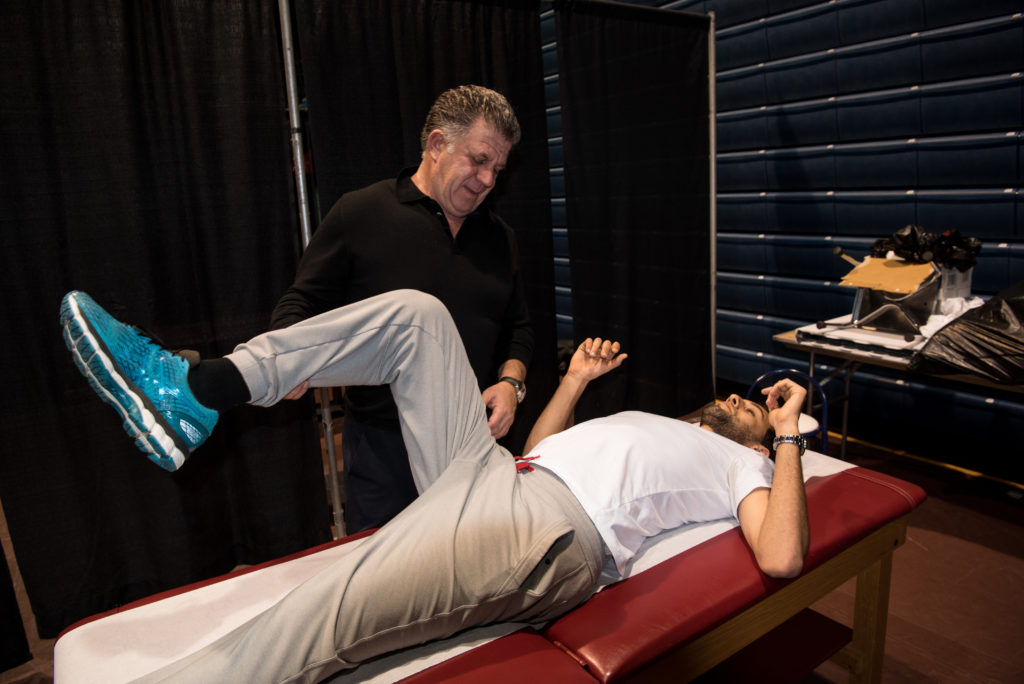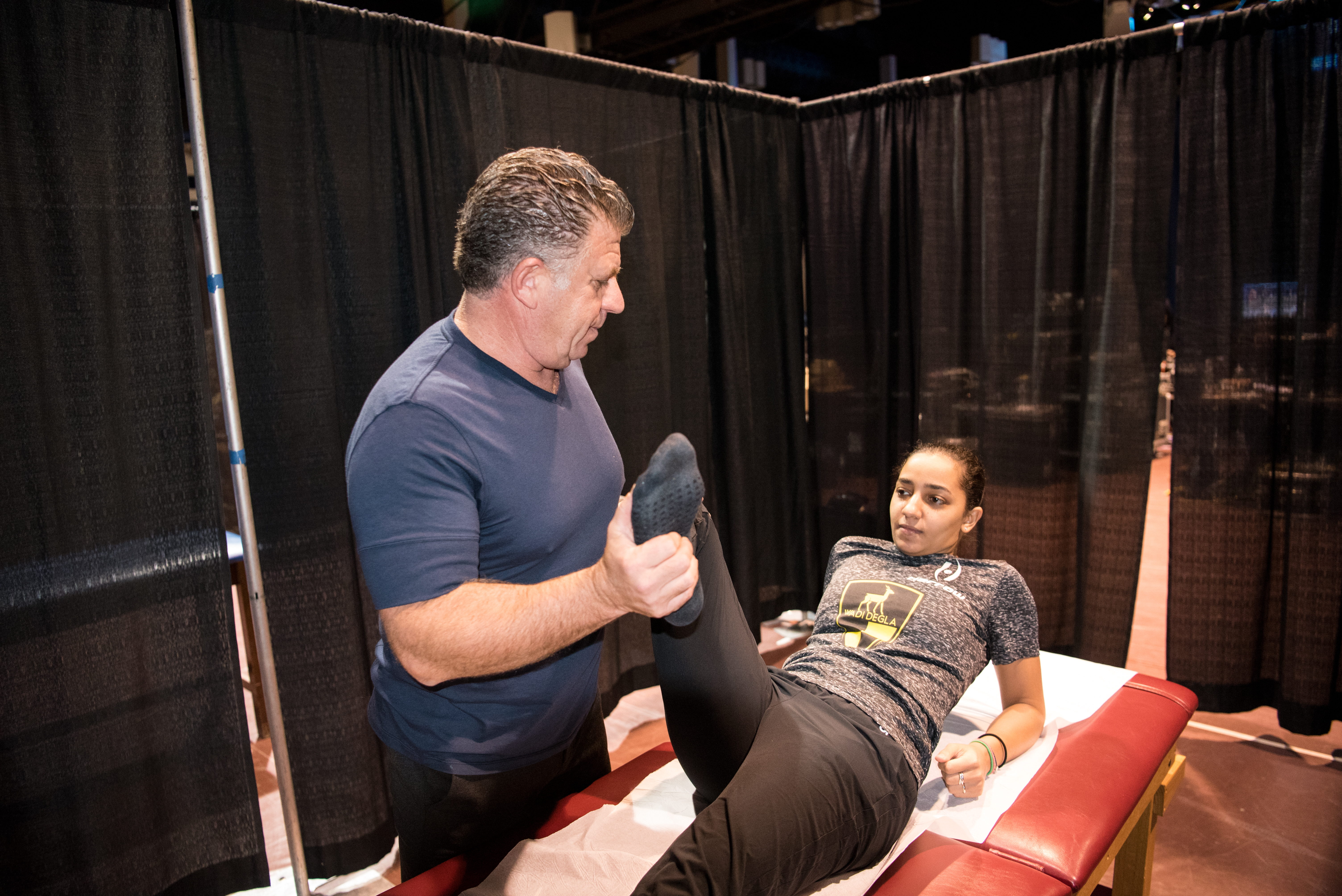
By Joseph Zarett
[Editors Note: We were talking with a number of players at the 2016 Delaware Investments U.S. Open who told us stories about their positive experiences working with Zarett Rehab & Fitness. With the permission of two players, we asked founder Joseph Zarett to explain what specifically they had been working on.]
Professional squash players’ bodies are like musical instruments. If you play properly, it is beautiful music. If you don’t, you can break the strings.
Last year, Mohamed Elshorbagy came in to visit me once. He felt great throughout the tournament. This year, however, he came into Zarett Rehab & Fitness on the very first day with complaints of muscle overuse and tightness, specifically in his hamstrings. This was due to an intense summer training and his exhausting travel schedule.
Typically, a physical therapist will go in and work directly on the area of pain. I try to think more holistically. Overuse trauma and tearing of the posterior hip musculature (such as the hamstrings) are frequently the symptoms; the actual cause is tightness in the anterior hip muscles, such as the iliopsoas and long head of the quadriceps. The iliopsoas is a short, very powerful muscle that only crosses the hip, where the rectus femoris (long head of the quadriceps) crosses the hip and knee. Tightness in the anterior hip musculature leads to restricted hip extension range of motion. That can cause the glutes and hamstrings to fire in a restricted capacity, which will likely lead to injury; the trauma can eventually extend down to the calf and Achilles tendon.
When Elshorbagy came into Zarett at the start of the tournament, the physical therapists and I treated the iliopsoas and the long head of the quads first, slowly working down the chain to the hamstring. Our treatment approach and methods dramatically helped improve his push-off and lunging/first step ability. We worked with him daily and hearing him credit our collaboration as being an essential part of him winning the tournament was rewarding.
Raneem El Welily was another client. Two years ago she was up 2-0 against Alison Waters in the semis of the 2014 Carol Weymuller in Brooklyn. El Welily lost the third 11-7 but was leading in the fourth, about to take the match. Then she stepped on Waters’ foot and turned her ankle. She could barely move and she lost the fourth game in overtime and the fifth 11-2.

It was a week before the 2014 Delaware Investments U.S. Open. She went to an ankle-foot doctor in New York who suggested she rest and ice the ankle. She took the bus to Philadelphia. It felt ok, but during a practice hit with Omneya Abdel Kawy, she twisted it again coming down after leaping for a volley. She asked for a physio and was sent to me.
Using our holistic approach, we performed an assessment of El Welily in which we found lack of stability in the ankle as well as overall lack of balance in terms of flexibility and strength throughout her essential musculature. We worked on with her daily and provided taping of her ankle prior to every match. She had a remarkable run, getting all the way to the semi-finals before losing to eventual winner Nicol David.
One common factor with most of these professional athletes is their tendency to develop overuse syndrome, which is the nature of this great game. Squash is an impact sport. Pro athlete’s bodies endure incredible overuse. Providing a properly designed exercise, flexibility and manual therapy program can affect the entire muscle chain and help improve the outcome tremendously. You have to preserve the instrument.





